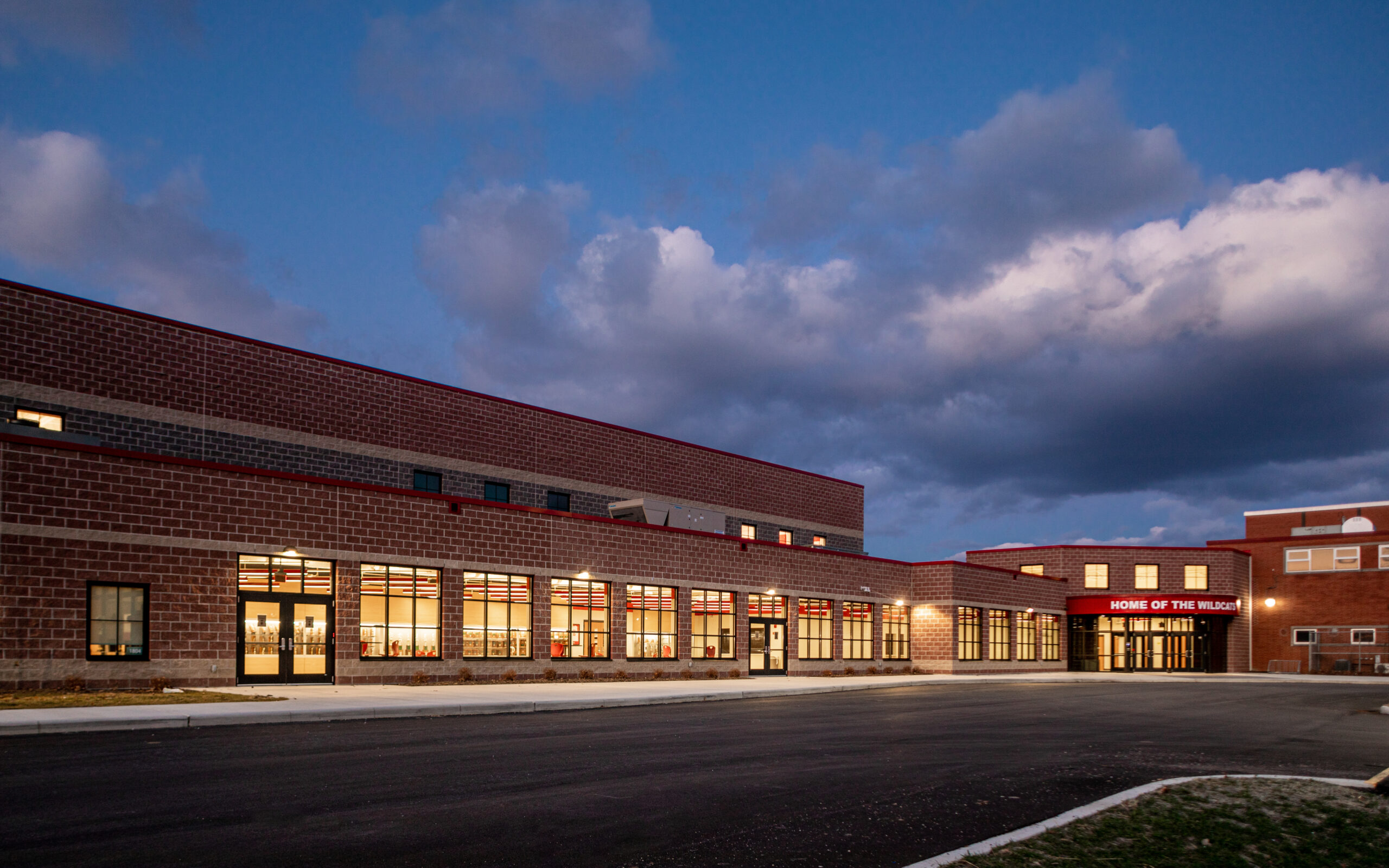Warm, Dry, and Safe Buildings – Ditching Deferred Maintenance for Peace of Mind (and Budget)

We recently hosted a webinar with the Ohio School Boards Association sharing ways your school can move from costly, disruptive reactive maintenance to a proactive approach that keeps your buildings open and your students and staff warm, safe, and dry. Watch some highlights of that webinar above, and read our thoughts below.
Keeping school buildings warm, safe, and dry is essential to keeping students and staff healthy. Not only is it vital to create a comfortable learning environment, but ensuring the temperature is properly controlled can help reduce allergies, asthma, and other illnesses caused by airborne pollutants. HVAC systems play a key role in this process – they maintain a consistent temperature while also filtering out harmful particles from the air. In addition to their role in keeping the air clean, properly functioning HVAC systems can help improve energy efficiency by eliminating wasted energy that results from inefficient combustion or short-cycle operations.
School districts have been struggling with limited maintenance staff for years – but with the emergence of Covid-19, there has been an increased focus on ensuring buildings are up to date with safety and health regulations. Secured vestibules have become more common as schools look for ways to keep out intruders and ensure everyone inside the building remains safe. Additionally, many districts are now implementing health clinics complete with isolation rooms for sick students – as well as increasing mental health staff so that problems can be identified early on and addressed before they become too severe.
To ensure classrooms stay warm, safe, and dry during cold weather months, it is essential that school districts invest in high quality HVAC systems that can both filter out harmful particles while cooling or heating rooms efficiently. Many schools are now investing in air purification systems that contain electronic filters. These filters trap tiny particles like pollen or mold spores which may cause allergies or asthma reactions if present in large amounts within indoor air spaces. Additionally, proper insulation is key – poorly insulated walls can cause drafts which not only make rooms colder but also increase energy bills due to wasted heat escaping outside the building instead of remaining indoors where it’s needed most.
It is crucial for the comfort of students and staff and to protect the building from water intrusion. Leaky roofs and windows, issues with flashing, and other ways that water can get in can cause extensive problems if not addressed in a timely manner.
Not only can these structural deficiencies lead to mold growth within the walls or ceilings of a building, they can also create further issues with insulation and hazardous material contamination. Moisture can compromise insulation’s ability to keep buildings warm during cold weather months, making it more difficult for teachers and staff to maintain an optimal comfort level in classrooms or offices. When left unaddressed for prolonged periods of time, even minor leaks can result in hidden pockets of mold or mildew growth that spread as particles become airborne. This can cause serious health issues for those exposed over a long time.
In extreme cases, water infiltration caused by leaks or issues with flashing can even lead to structural damage of a building’s rafters or joists – something that can cost vast amounts of money to replace. Fortunately, there are steps you can take to prevent such issues before they start: regular inspections and maintenance of your school’s roofing system is critical when it comes to staying ahead of such costly repair work. It is important that any suspected problem areas be inspected by a qualified professional as soon as possible so steps may be taken to correct the issue and minimize potential damage before it’s too late.
Finally, ensuring humidity levels remain optimal is also critical; too much humidity can lead to mold growth whereas too little can leave people feeling overly dry and uncomfortable in an otherwise warm room. Installing dehumidifiers or humidifiers can help maintain ideal levels – although having an experienced technician monitor your HVAC system regularly will ensure everything remains running optimally year-round so you don’t have any surprises when wintry weather begins!
Tired of being stuck on the reactive hamster wheel of facilities management? Let Triad Facility Solutions be your trusted partner! Our team are experts in their field and use industry-specific knowledge to identify when replacements may be needed. We can take off some pressure by ensuring that any repair or replacement is completed within budget and with impeccable quality standards – letting you rest easy knowing it’s all taken care of. Trust us to keep your new and existing facilities running efficiently, leaving time for other important tasks.
We provide comprehensive services to ensure that our clients are always receiving unparalleled attention and assistance with their facilities. From assessing site systems and architectural reviews on accessibility, condition, and code compliance to evaluating electrical, mechanical conveying and fire/life safety systems – we do it all! Additionally, with Remaining Service Life evaluations and detailed budget forecasting of deferred maintenance items, you can trust us to get your job done on budget and on time, every time. Our team is committed to sourcing multiple bids from trusted contractors so you know exactly what kind of work will be provided at a competitive rate – maximizing value with efficiency.
Trust Triad Facility Solutions to guide you through your project with ease and precision. With over ten years of design and construction experience, we will represent your interests throughout the process – from pre-project planning all the way until completion. We bring unique solutions tailored directly to meet the needs of each client so you can have peace of mind knowing that nothing is being overlooked or left undone!

